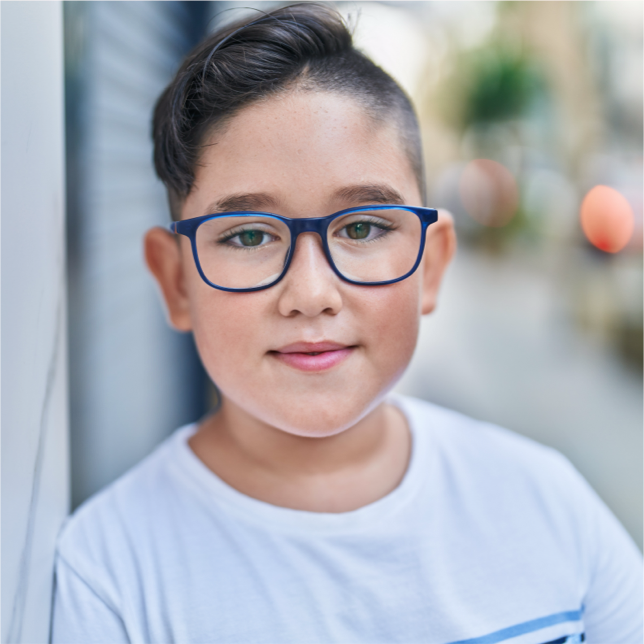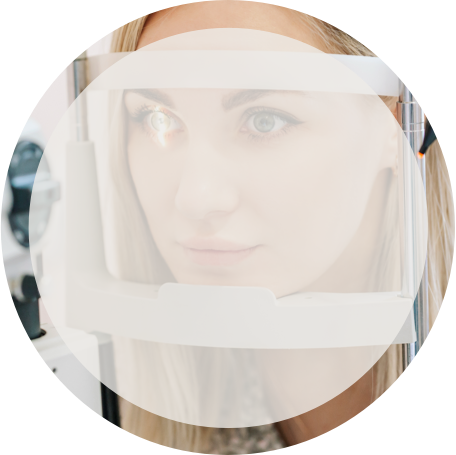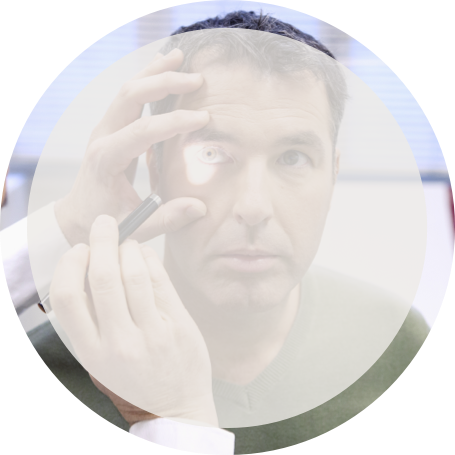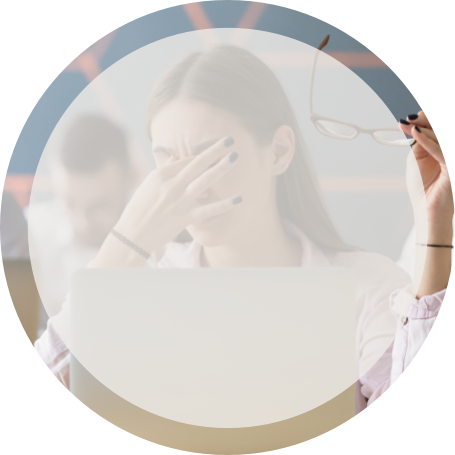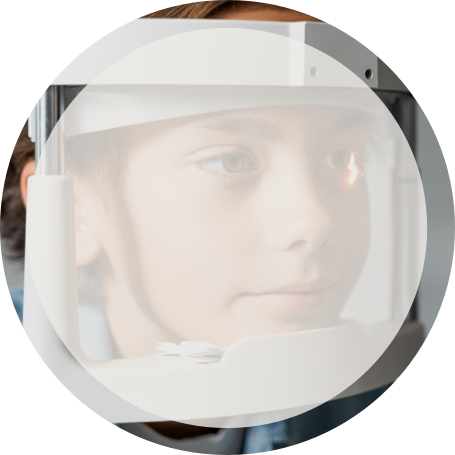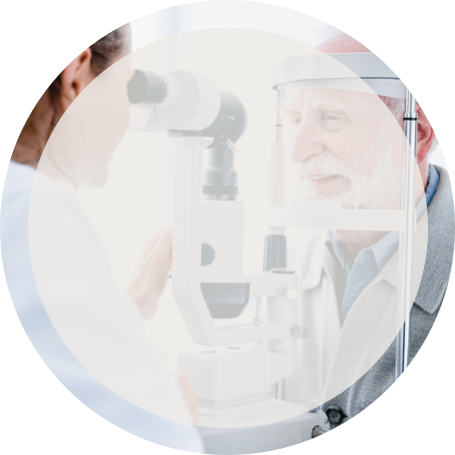
Restore Comfort and Clarity to Your Vision

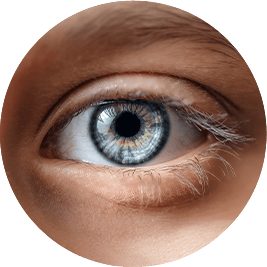
Life can get busy—there are so many different responsibilities and things to do, and the last thing you need to do is deal with dry eye. Your eyes play a vital role in your daily life, and dealing with dry eye disease can disrupt your comfort and quality of vision.
With 1 in 5 adults affected by dry eye, you’re not alone, and relief is within reach. Our team provides personalized dry eye treatments tailored to your unique needs, helping you regain the comfort you deserve.
Schedule a visit today for a comprehensive eye assessment and take the first step toward saying goodbye to dry eye discomfort!

Take Our Dry Eye Quiz
Our dry eye questionnaire is here to help if you’re unsure about your symptoms. Answer a few questions, and we can recommend that you visit us for a dry eye diagnosis.
The Importance of Your Tears & Dry Eye Disease
Dry eye disease occurs when tears can’t properly moisturize the eyes, either due to insufficient production or poor tear quality.
Tears are essential for eye health—they keep eyes lubricated, wash away debris, and prevent infection. Your tear film has 3 layers:
- Mucus: Helps tears stick to the eye
- Oily: Prevents tear evaporation
- Watery: Removes dirt and debris

Causes & Symptoms of Dry Eye
We understand how frustrating dry eye can be. If you’ve been dealing with persistent symptoms of dry eye disease, come see us for a treatment plan that can help relieve your discomfort.
Addressing dry eye early can also prevent potential complications, such as eye infections or damage to the eyes’ surface.
Dry eye can be caused by a number of different factors, including:
- Meibomian gland dysfunction
- Aging
- Certain medical conditions such as Sjogren’s syndrome, rheumatoid arthritis, lupus, & thyroid disorders
- Certain medications, including antihistamines & decongestants
- Contact lens wear
Causes of increased tear evaporation can include:
- Low blink rate
- Wind, smoke, or dry air
- Eye allergies
- Eyelids turning inward or outward
Symptoms you may experience if you have dry eye include:
- Stinging or scratchy sensation
- Eye redness
- Blurred vision
- Light sensitivity
- Mucus in or around the eyes
- Feeling like something is in your eyes
- Trouble wearing contact lenses
- Excessive eye watering

Types of Dry Eye
Dry eye disease can be categorized into 2 main types, each with its underlying cause and treatment approach.
Aqueous deficient dry eye occurs when your eyes don’t produce enough tears to keep them properly lubricated. It is often caused by conditions like Sjogren’s syndrome, aging, or certain medications. Without adequate tear production, the eyes can become dry, irritated, and more susceptible to infection.
Evaporative dry eye happens when the tears produced by your eyes evaporate too quickly. This is usually caused by meibomian gland dysfunction, where the glands that produce the oily layer of tears are blocked or don’t function properly.
Factors like environmental conditions, eyelid issues, or a low blink rate can also contribute to this type.

Getting the Diagnostics Right
At Family Vision Care, diagnosing dry eye disease accurately is the first step in providing effective treatment.
We use innovative diagnostic tools and techniques to identify the root causes of your symptoms so that you receive a personalized treatment plan. Here’s how we assess your eye health.
Automated TBUT measures the stability of your tear film. Using this technology, we can evaluate how quickly your tears evaporate and detect any dry spots on your eyes.
In addition to automated TBUT, we may also perform a subjective test to evaluate how long it takes for your tears to evaporate, which can provide more information on the stability of your tear film.
Special dyes are applied to your eyes to highlight any areas of dryness or damage to the surface of your eye. This allows us to identify any issues affecting the health of your cornea and the tear film.
This imaging technique helps us visualize the meibomian glands in your eyelids, which produce the oily layer of your tears. Blocked or damaged glands are a common cause of evaporative dry eye.
This test measures the volume of tears your eyes produce. It helps us determine if your dry eye are due to insufficient tear production, which can be caused by various factors, including medical conditions or medications.

Helping You Find Relief & Treating Dry Eye
OptiLIGHT by Lumenis is a light-based, noninvasive treatment done in the area below the eyes to manage dry eye. The first and only IPL FDA-approved for dry eye management.
The treatment is safe, gentle, and is backed by more than 20 clinical studies.
OptiLIGHT uses precise pulses of light to reduce the inflammation that is typically associated with dry eye disease, improve tear break-up time, and increase meibomian gland functionality.
LipiView is a noninvasive device that provides high-definition meibomian gland imaging. This technology can help us accurately assess your tear film and its lipid content and quality.
From there, we can determine if LipiFlow or another form of treatment is right for managing your dry eye symptoms.
LipiFlow is a noninvasive treatment that helps to unclog blocked meibomian glands. This device uses a combination of gentle heat and massage to melt and secrete the thick oil clogging the glands.
Natural oil production can resume and create a sufficient oil layer in the tear film, decreasing the number of tears that evaporate too quickly.
Amniotic membranes have great healing and restorative properties. Therapy with amniotic membranes can help treat moderate to severe dry eye and other ocular surface conditions.
The membrane is secured by a flexible plastic ring that gets inserted between the eyelids, allowing the tissue to rest on the eye’s surface. After a few days, your eye doctor will remove the membrane and plastic ring. Both insertion and removal are quick and painless and offer long-lasting benefits.

Your Path to Relief Begins at Family Vision Care
Don’t let dry eye hold you back any longer. We’re here to help you find the right solution to relieve discomfort and improve your quality of life. Schedule your appointment today and take the first step toward feeling better.
Neurolens: Relief for Eye Strain & Headaches
Do your eyes feel exhausted after a long day looking at screens? Does your neck ache, or do you get frequent headaches? We want to help!
Neurolens glasses are designed to correct subtle misalignments in your eyes that can cause eye strain, headaches, light sensitivity, and aching shoulders. For many of our patients, the relief of wearing Neurolenses makes a major difference in their quality of life every single day.

Our Locations
Baden
We’re located at the corner of State Street and Holmes Avenue next to the United States Post Office.
Our address
- 400 State St.
- Baden, PA 15005
Contact Us
- 724-869-1870
- 724-869-8113
Our Hours
Cranberry
Find us on Robinhood Drive, just off Rochester Road. If you have any trouble finding us, feel free to give us a call.
Our address
- 4 Robinhood Dr.
- Cranberry Township, PA 16066
Contact Us
- 724-776-3033
- 724-776-3059
Our Hours
Wexford
Our Wexford office is located in the Pine Center Plaza off the 11279 Perry Highway.
Our address
- 11279 Perry Hwy Suite 309
- Wexford, PA 15090
Contact Us
- 724-940-0150
- 724-940-0244
Our Hours
Mt. Oliver
Find us on Brownsville Road across from the Firehouse. Give us a call if you have any trouble locating our office.
Our address
- 119 Brownsville Rd.
- Pittsburgh, PA 15210
Contact Us
- 412-381-7600
- 412-381-5015
Our Hours
*We’re open every other Saturday from 8:00 AM–12:00 PM and closed Sundays.


